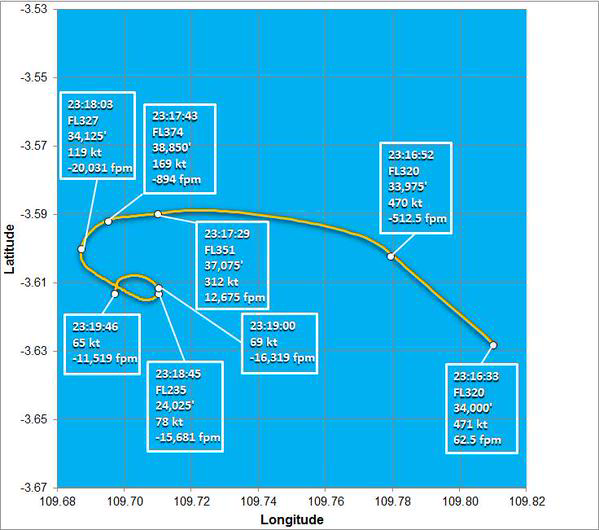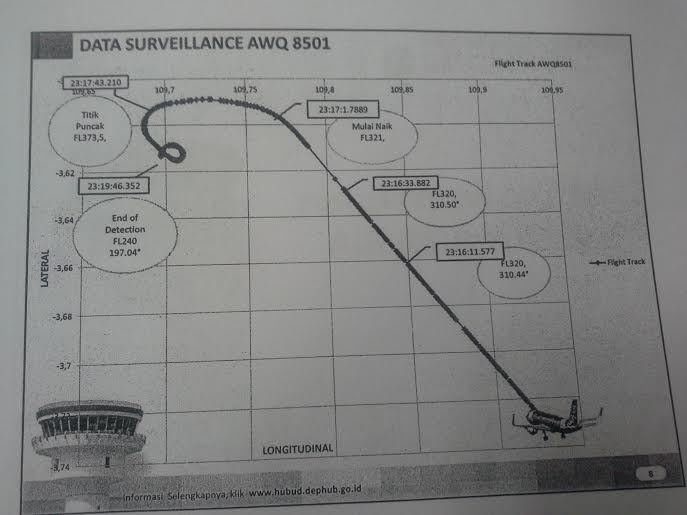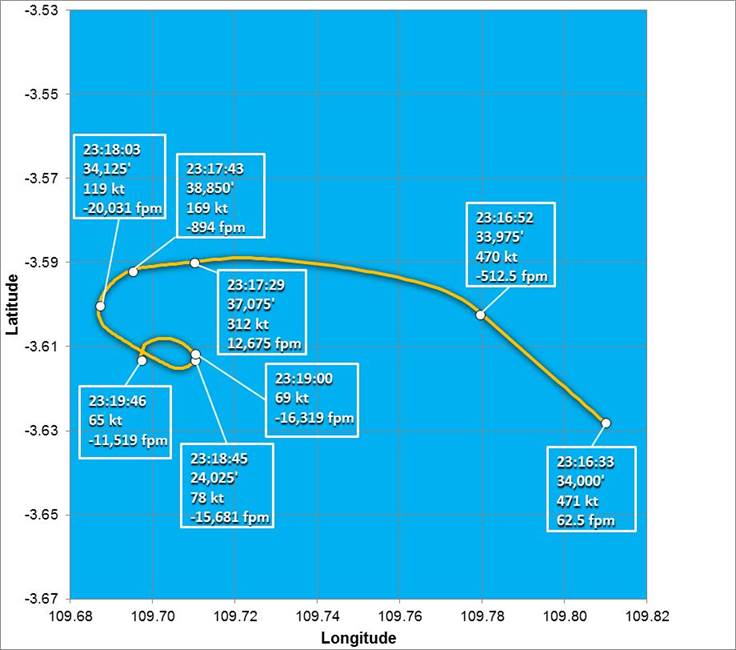
Throughout the first week of the accident, amidst the speculation and mad schedules, I received from various sources leaks of the aircraft trajectory based on the ADS-B replay data. A projection with more details than the one issued by the government is shown above.
Me and several colleagues who spent many hours looking into the ADS-B data are committed to not disclose the actual replay of the original ADS-B data, to respect the process undertaken by the Indonesian National Transportation Safety Committee. The projection above was also only disclosed publicly after the goverment decided to issue a less detailed projection:

What can we decipher from the ADS-B data?
- The aircraft was cruising “normally” at FL320.
- At 23:16:52, the aircraft began to turn left, with a slight drop in altitude and shown by the vertical speed.
- After turning left further, at 23:17:29, the aircraft reached a maximum vertical climb rate of 12,675ft per minute, passing FL351, and a ground speed of only 311.57kts.
- At 23:17:43, the aircraft began to turn left again and had just passed it’s maximum altitude and was recorded at FL373, and began to drop at a rate of -894ft per minute and a ground speed of only 169.19kts.
- At 23:18:03, the aircraft made a sharper turn to the left, dropping through FL327, at a rate of -20,000ft per minute, and a ground speed of only 119.09kts.
- After continuing south east for a about half a minute, the aircraft began to turn left again at 23:18:45, passing through it’s last valid altitude at FL235, with a descent rate of -15,681fpm and a ground speed of a mere 78kts.
- The aircraft continued a tight left turn and was last detected at 23:19:46 with a ground speed of just 68kts.
From the trajectory, we can conclude the following:
- The aircraft flight control law must have degraded from Normal Law in order for the aircraft to depart the protected flight envelope.
- The climb rates are possible because of the consequential loss in forward speed. This negates the theory of updrafts.
- The aircraft would not have gone very far from the last point of contact, given the speed and descent rate. A recovery out of the stall into normal flight was extremely unlikely.
- The impact would have been one of high vertical rate, with low forward speed, and a relatively level to nose up aircraft body attitude, similar to Air France 447, but the roll angle is anyone’s guess.
What remains unknown from the trajectory information:
- What caused the flight control system reconfiguration.
- Who was the pilot flying? The Captain or the First Officer
- What was the trajectory below FL235.
Thankfully, on 29 January 2015, the Indonesian National Transportation Safety Committee had released some information regarding to the factual aspect of the accident.

